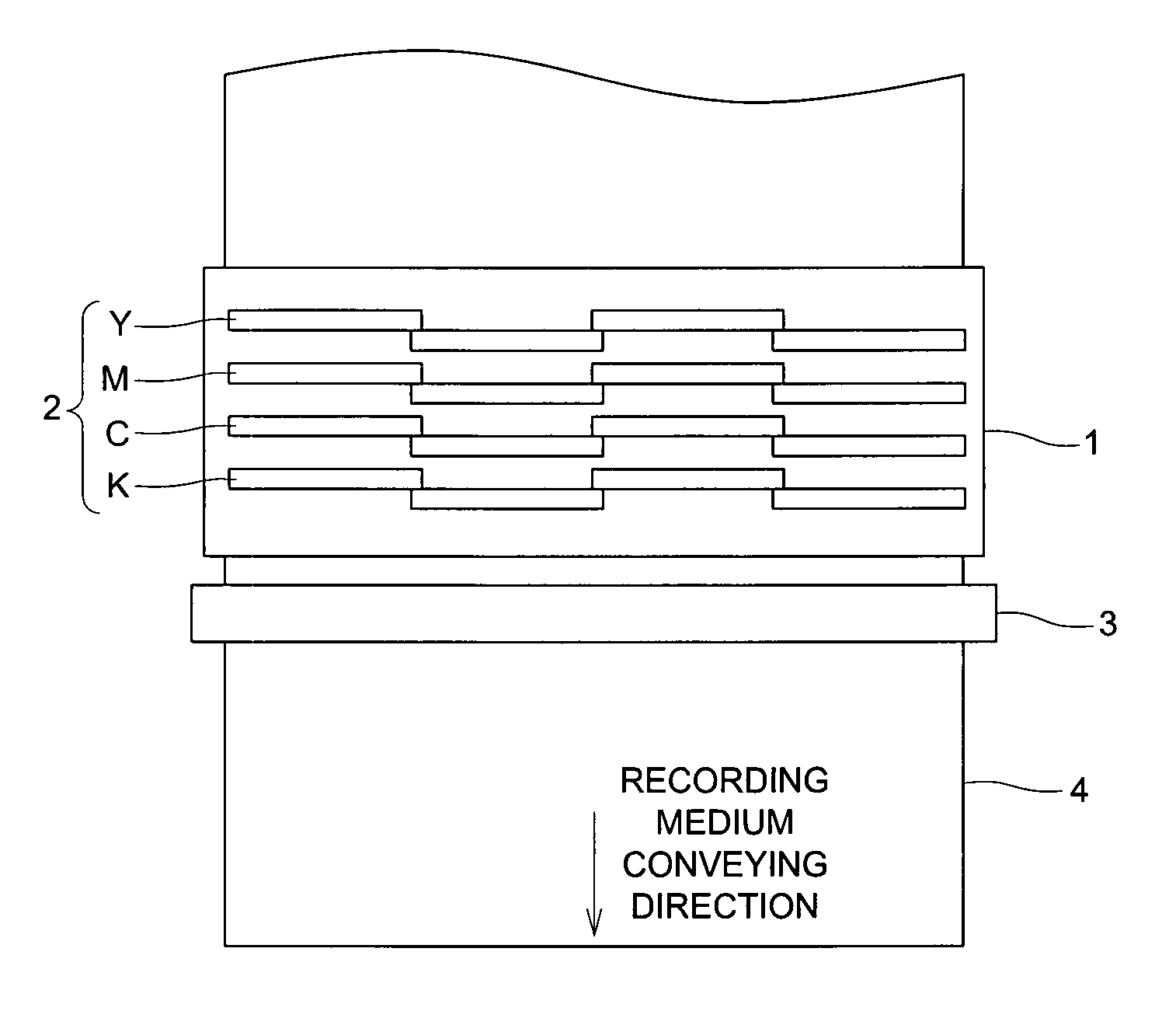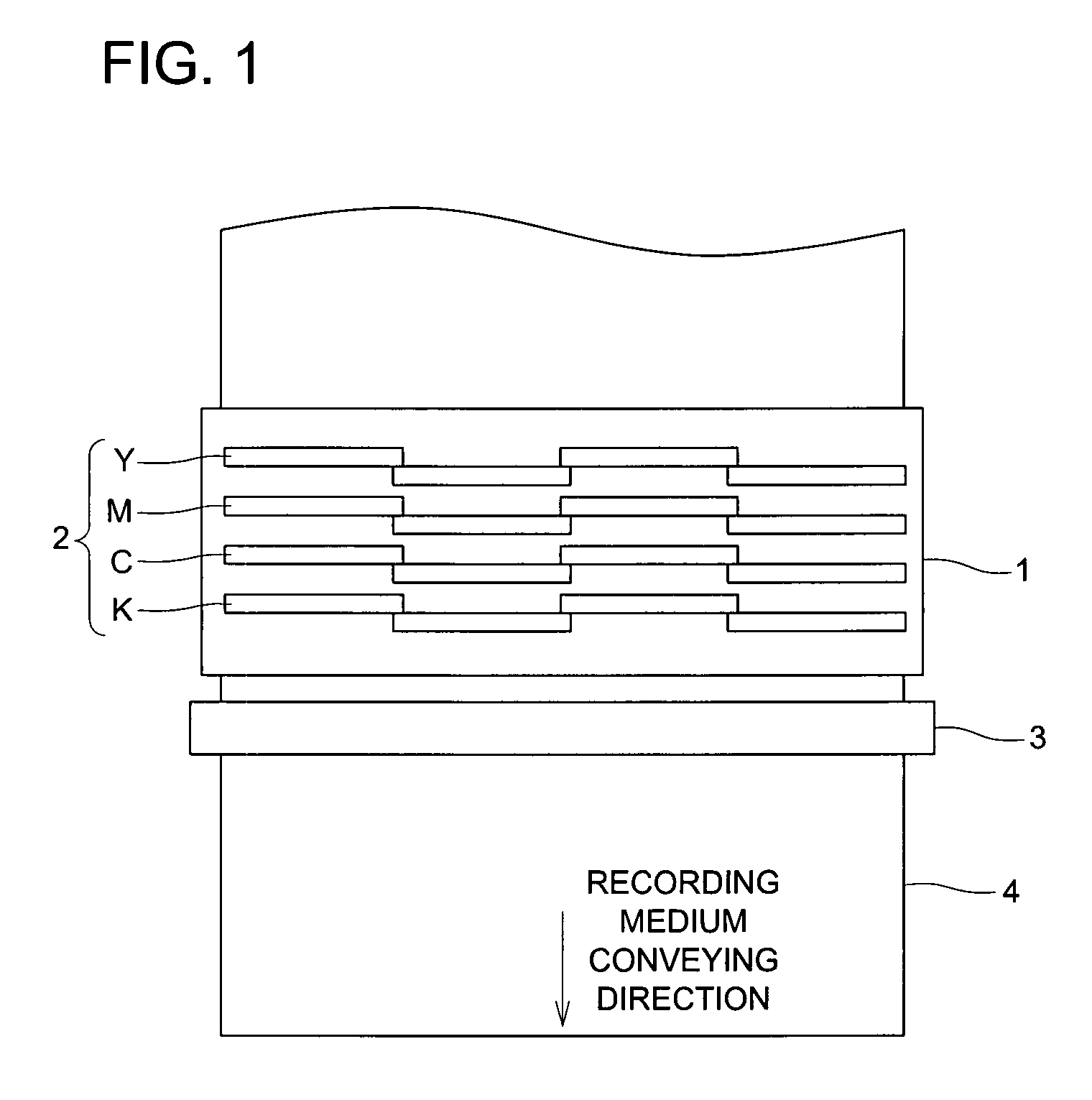Image forming method, actinic radiation curable ink-jet ink, and inkjet recording apparatus
a technology of actinic radiation and image forming, which is applied in the direction of inks, instruments, printing, etc., can solve the problems of image quality degradation, limited recording media, and increased cost of such recording media, and achieves stable recording of highly detailed images, minimizes color mixing (bleeding), and excellent text quality
- Summary
- Abstract
- Description
- Claims
- Application Information
AI Technical Summary
Benefits of technology
Problems solved by technology
Method used
Image
Examples
example 1
Preparation of Pigment Dispersion Set
[0089]Pigment Dispersion Sets A-E were prepared each of which was composed of a yellow pigment dispersion (hereinafter referred to as Y Pigment), a magenta pigment dispersion (hereinafter referred to as M Pigment), a cyan pigment dispersion (hereinafter referred to as C Pigment), and a black pigment dispersion (hereinafter referred to as K Pigment), each of which was formulated as described in Table 1.
[0090]In practice, placed in a stainless steel beaker were the dispersing agent and the monomer described in Table 1, and dissolution was conducted for one hour on a hot plate at 65° C., while heated and stirred. Subsequently, after cooling the solution to room temperature, 20 parts of the pigment described in Table 1 were added. The resulting mixture was sealed in a glass bottle together with 0.5 mm zirconia beads and dispersed over the period listed in Table 1, employing a paint shaker. Thereafter, the zirconia beads were removed, whereby each of ...
example 2
[0126]Each of the ink sets, described in Example 1, was employed, and images were formed while changing the ejection order of each colored ink. The formed images were evaluated in the same manner as in Example 1. As a result, it was possible to confirm that effects of the present invention were further enhanced by initially discharging ink exhibiting maximum ΔS.
[0127]Further, images which were formed while appropriately changing the actinic radiation exposure initiation after ejection of each colored ink onto the recording medium were evaluated employing the same method as in Example 1. As a result, it was possible to confirm that by carrying out exposure of actinic radiation after all inks were deposited onto the recording medium, effects of the present invention were further enhanced.
example 3
[0128]Images were formed employing each ink set described in Example 1 while appropriately changing the volume of ink droplets ejected from each nozzle of the ink-jet recording head. Subsequently, the formed images were evaluated for each of the above items, employing the same method as in Example 1. As a result, it was possible to confirm that effects of the present invention were further enhanced by discharging a volume of ink droplets within the range of 2-15 pl.
[0129]Further, images were formed by appropriately changing the heating temperature of the ink-jet ink and the recording head. Formed images were evaluated for each of the above items, employing the same method as in Example 1. As a result, it was possible to confirm that by carrying out ejection within the heating temperature range of the ink-jet ink and the recording head of 35-100° C., effects of the present invention were further enhanced.
PUM
| Property | Measurement | Unit |
|---|---|---|
| viscosities | aaaaa | aaaaa |
| volume | aaaaa | aaaaa |
| weight % | aaaaa | aaaaa |
Abstract
Description
Claims
Application Information
 Login to View More
Login to View More - R&D
- Intellectual Property
- Life Sciences
- Materials
- Tech Scout
- Unparalleled Data Quality
- Higher Quality Content
- 60% Fewer Hallucinations
Browse by: Latest US Patents, China's latest patents, Technical Efficacy Thesaurus, Application Domain, Technology Topic, Popular Technical Reports.
© 2025 PatSnap. All rights reserved.Legal|Privacy policy|Modern Slavery Act Transparency Statement|Sitemap|About US| Contact US: help@patsnap.com



